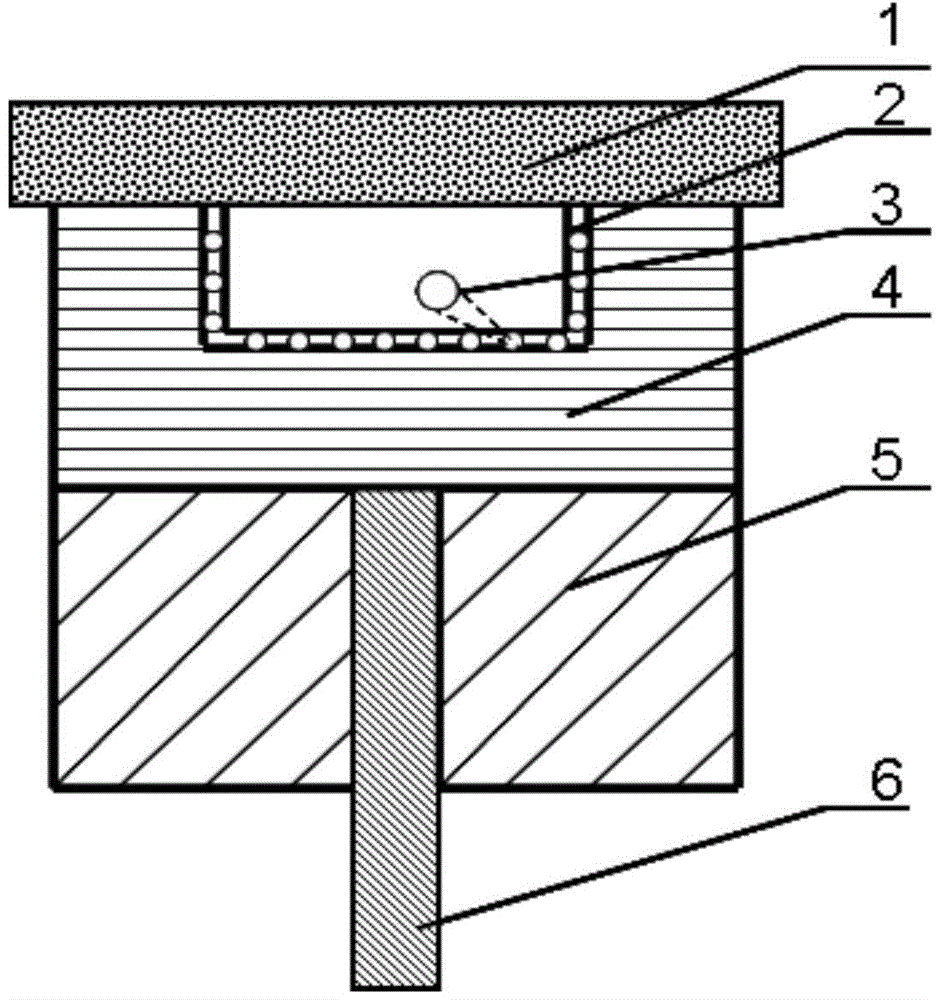High-vacuum optical fiber F-P pressure sensor
A pressure sensor, F-P technology, applied in the direction of fluid pressure measurement using optical methods, etc., can solve the problems of residual gas in the F-P cavity, the reduction of vacuum, and the influence of the accuracy of the F-P pressure sensor, and achieve strong conductivity and strength. Effect
- Summary
- Abstract
- Description
- Claims
- Application Information
AI Technical Summary
Problems solved by technology
Method used
Image
Examples
Embodiment Construction
[0012] See figure 1 . In the embodiments described below, the high-vacuum optical fiber F-P pressure sensor is composed of a pressure diaphragm 1, a graphene film 2, a gas adsorption nanoparticle 3, an upper ferrule 4, a lower ferrule 5, and an optical fiber 6. The upper ferrule 4 has a groove, and the bottom surface and four walls of the groove are covered with a layer of nanoparticles 3 used to absorb the residual gas in the FP cavity and are wrapped by the graphene film 2. The pressure diaphragm 1 is connected with the upper ferrule 4 to form an FP The cavity, the bottom surface of the groove and the four walls are covered with adsorption nanoparticles 3 used to adsorb the residual gas in the FP cavity. The adsorption nanoparticles 3 are wrapped by the graphene film 2, and the pressure diaphragm 1 is connected with the upper ferrule 4 to form the FP cavity. The ferrule 4 and the lower ferrule 5 are integrated by interconnection. A part of the optical fiber 6 is inserted in...
PUM
| Property | Measurement | Unit |
|---|---|---|
| Thickness | aaaaa | aaaaa |
Abstract
Description
Claims
Application Information
 Login to View More
Login to View More - R&D
- Intellectual Property
- Life Sciences
- Materials
- Tech Scout
- Unparalleled Data Quality
- Higher Quality Content
- 60% Fewer Hallucinations
Browse by: Latest US Patents, China's latest patents, Technical Efficacy Thesaurus, Application Domain, Technology Topic, Popular Technical Reports.
© 2025 PatSnap. All rights reserved.Legal|Privacy policy|Modern Slavery Act Transparency Statement|Sitemap|About US| Contact US: help@patsnap.com

